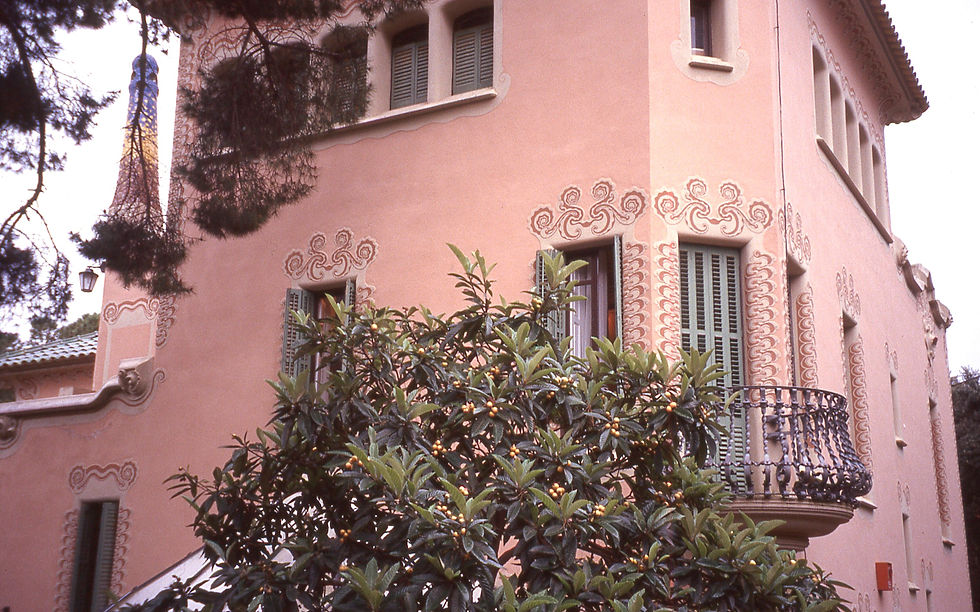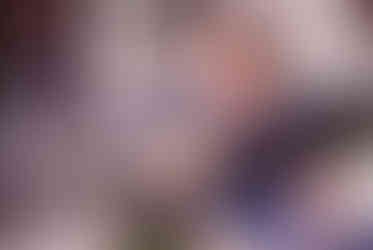BOXES 242-243: Barcelona.
- Joe Milicia
- Feb 5, 2023
- 6 min read

This is the nuts-and-candy stand of La Boqueria, the enormous indoor market of Barcelona, located right off the celebrated street called La Rambla. The market was crowded on the day in May 2003 Anne and I visited, but not uncomfortably so (unlike the day in October 2016, my second visit to the city, when the entranceway was so jammed with tourists that it was simply impossible to enter).
Our hotel too was on La Rambla (also called Las Ramblas, since the street changes its secondary name as it rises northward from the port). Or rather, the hotel entrance was on La Rambla, but we had to take a slightly dingy corridor to a back building, where our accommodation was decent but a far cry from the welcoming and beautiful Hotel Infanta Isabel in Segovia, which we'd just left.
Here's the first slide photo I took of Barcelona, showing a stretch of La Rambla:

You can't easily tell from this picture that there is one-lane one-way vehicle traffic on either side of the central pedestrian space. The street goes on for many blocks and is surely one of the great urban spaces. At one point during our stay Anne and I had sangrias at a café set up on the pedestrian walk:

I see that we were at the Café Liceu, which must have been close to the great Liceu Opera House, where we saw Wagner's Das Rheingold one evening. As for La Boqueria, up the block, I can share two more pics, the first looking back toward La Rambla (where a bus is going by), the second showing some attractive lettuces:


There are lots of fascinating buildings along La Rambla and indeed throughout Barcelona, and this post will have more architectural photos than any other kind. During the decades roughly 1890-1910 there was a Catalan movement in the arts called Modernisme, corresponding to Art Nouveau and related styles throughout Europe, but with a really distinctive look in Barcelona. Antoni Gaudi is by far the most famous architect of the movement, but Barcelona has lots of striking buildings designed by others too. One right near the Liceu is the Casa Bruno Quarda with its odd designs between the windows:

Just across a side street from that building is another that I can't identify:

On a street just off La Rambla is an early house designed by Gaudi, the Palau Guell. My only photo of it is looking up at some fanciful roof ornaments:

Also just off La Rambla but on the other side of the street is the Plaza Reial, popular for its restaurants, with lampposts designed by Gaudi:

At the south end of La Rambla, where the street empties into the harbor district, stands the Port of Barcelona Building:

And at the northern end of the 'old part' of La Rambla is the Plaza de Catalunya, a very large open space with fountains:


Beyond the Plaza, as you can see in the second photo, is the beginning of a district called the Eixample (the 'Extension' of the Old City). It was developed around the turn of the 20th Century in a grid pattern with broad, straight avenues. My photo shows the start of the Eixample's grandest avenue, the Passeig de Gracia, which Anne and I walked along to see a couple of Gaudi's most landmark buildings plus more by other Catalan architects. The avenue's street lamps are a striking design feature in themselves:

Here's Anne sitting on one of the benches beneath one of the streetlamps:

One of the eye-catching townhouses on the Passeig de Gracia is the Casa Lleon Morera, a corner building, completed in 1906, with its fanciful crown (which the guidebooks call a 'tempietto'--'little temple'):


My attempt to zoom in on the tempietto turned out to be too soft-focused, but here it is. Farther up the avenue is an incredible pair of buildings, though my problem here in getting a good shot was the clutter of trees and lamplights:

Here's my second attempt. These are the Casa Amatller. with its Dutch-style peak and the more stunningly original Casa Batllo, designed by Gaudi.


We went into the lobby of the Casa Amatller, where we looked up at a stained-glass skylight. We were able to tour the Casa Battlo, where I didn't take any interior photographs, but here are two better photos of the façade:



After our tour of the Villa Batllo we had lunch at a recommended tapas place called El Glop, back on La Rambla, before visiting another Gaudi landmark, just up the street from the Villa Batllo, called the Casa Mila:

This is another corner house, built for the wealthy Signor Mila and his wife to live on the ground floor and rent out apartments above; completed in 1910 and now open to the public with a Gaudi gift shop just off the street. Here's another view:

There's so much to say about this place, and so much I didn't photograph during our visit (I don't recall a guide--I think we were allowed to explore on our own), that I refer you to the Wikipedia article, here. I took one picture of some crossbeams in a courtyard that help to hold up the walls of the building:

And here is a somewhat dizzying view of the Passeig de Gracia from the rooftop:

From another rooftop perspective you can see in the distance Gaudi's most famous building, the still-unfinished Church of the Sagrada Familia (which Anne and I saw only from the top of a double-decker bus on this trip):

The roof allows you to see close up the fantastic chimneys designed by Gaudi:

And here Anne and I are posing amid the chimneys:

Our other Gaudi experience in Barcelona was at the Parc Guell, located on higher ground north of the Eixample. Here you see one of the two gatehouses below the staircase leading up to the park:

And here is the spectacular staircase:

Mosaic tiles imbedded in the concrete are part of the overall design:

Partway up the staircase is a fanciful salamander fountain:

From up above you can see the city spread out to the harbor, and get a different perspective on the other gatehouse:

This terrace is fronted by a very long curving bench embedded with playful patterns of Spanish tile chips. My photos show only small stretches of it:



I took a couple of close-ups of the mosaics:


Looking at the sky and the subdued light in some of these pics, you can guess that rain was a possibility, and indeed umbrellas came out as we walked around the park:

Located on the park grounds is the Casa Gaudi, the architect's home, though he didn't design it:

There is an upper terrace too; I don't remember whether we went up to it:


Gaudi sometimes dined at a restaurant called Els 4 Gats ("The Four Cats") in a Moderniste building in Barcelona's Gothic Quarter. The place was frequented by young artists, including Picasso (who created a poster for it) and the composers Granados and Albeniz; it closed in 1903 but late in the century the building was restored and the restaurant reopened. I hate to include poorly focused shots, but I'll share this one because Anne and I had a memorable meal there--thanks to the good food and great turn-of-the-20th-century atmosphere. I took the photo from our table on the balcony, which lined two sides of the dining room. (You can explore online to learn a lot more about Els 4 Gats, and even see its current menu, which looks much more chic-contemporary than the old-fashioned entrees Anne and I had.)
Our transportation around Barcelona was via a double-decker tourist bus: if you bought a pass you could get on and off at any stop along its route. We took it up the steep hill called Montjuic, where among other places worth visiting we went to the Joan Miro Foundation. Here is part of its sculpture garden, with a view of the Tibidabo Hill in the far distance:

From the upper deck of the bus I caught this view of the Palau Nacional:

. . . and this one of a former bullfighting ring called the Arenas:

We rode down to the harbor:

. . . and passed a giant sculpture of a fish designed by Frank Gehry for the 1992 Barcelona Olympics. But I couldn't get an unblocked view of it from the bus:
Here's another view of Barcelona rooftops, though this must have been taken from a terrace rather than the bus:

On foot we wandered through the Gothic Quarter, where Barcelona's Cathedral is located. I'm surprised to find that I took no photos of the imposing church except for two of part of its cloister, with an orange tree among palms:
These pics are the last of my Barcelona slides. The next day we flew from Barcelona to Venice, but of course I'll save those pictures for my next post.















Comments